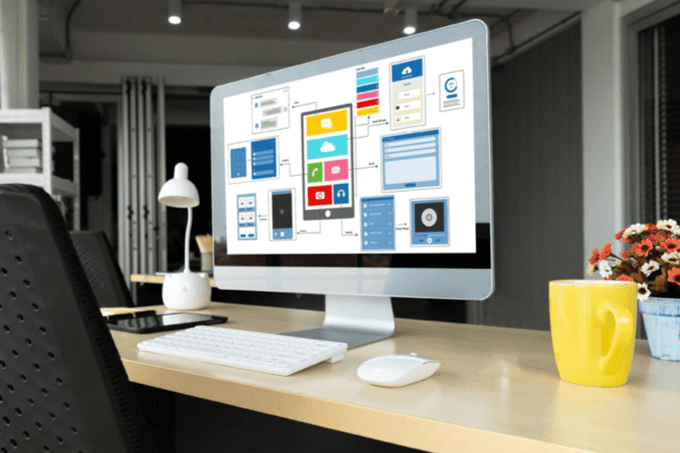Posted by Tech.us Category:
We are a team of technology experts who are passionate about what we do. We LOVE our customers. We LOVE technology. We LOVE helping you grow your business with technology.
Artificial Intelligence Services
Machine Learning Solutions
Generative Al Companies
Robotic Process Automation
Natural Language Processing
Chatbot Development Services
Enterprise AI Solutions
Data Annotation Services
MLOps Solutions
IoT Solutions
Data Mining Solutions
Computer Vision Services
Custom LLM
AI Agents
Agentic AI Development
Custom Software Development
Enterprise Software Solutions
Software Development Services
Website Development Services
Software Product Development Services
SaaS Development Services
Mobile App Development Services
Custom Mobile App Development
IOS App Development
Android App Development
Enterprise Mobile App Development
Hybrid App Development
Software Development Outsourcing
Dedicated Development Team
Staff Augmentation Services
IT Outsourcing Services
Data Analytics Services
Data Analytics Consulting Services
Business Intelligence Solutions
Software Modernization
Application Modernization Services
Legacy System Modernization
IT Security Solutions
Cyber Security Solutions
Cyber Security Managed Services
HIPAA Compliance Cyber Security
Cloud Application Development
Custom Web Application Development
Cloud Consulting Services
AWS Cloud Consulting Services
Enterprise Cloud Computing
Azure Cloud Migration Services

POPULAR POSTS
01
How To Improve Document Processing Accuracy Using Document AI
02
The Guide to Chatbot Development & What to Seek while Hiring a Company
03
Understanding Natural Language Processing: The What? The How? and The Why?
04
11 Proven Benefits of AI Chatbots for Businesses in 2025
05
A Complete Guide to SaaS Product Development
Posted by Tech.us Category:
Wireframes, mockups, and prototypes are popular terms in the field of user interface and user experience. However, many people still confuse the three software prototypes with one another and aren’t completely aware of how exactly they can be used to make better designs.
In this article, we’ll look at the distinct differences between the three in detail to help you to understand when a wireframe, mockup, and prototype should be used during the design process.

A wireframe is essentially a rough outline or sketch of an app or website, focused on how it will look once it’s done. It’s often presented with boxes, gray lines, placeholders, and various colors.
Think of it as a building blueprint, one that involves lots of work from participants before it can be converted into the finished product. A wireframe is the perfect tool to use for the early design or brainstorming stage of a project.
Wireframes are the essential framework of an app or website and have three main goals:
As stated earlier, a wireframe is a basic blueprint that maps out how an app or website is going to be designed later on in the project. It allows for the whole product team to focus primarily on the larger decisions of the project before diving into other details.
A wireframe helps simplify the overall design process and provides several benefits:
A wireframe is a great option for you and your team members to help visualize the more pressing aspects of the project. It also helps everyone to stay involved with the design instructions during the initial design stage.
During the initial brainstorming stage, most designers prefer drawing out their app or website interface directly onto paper. This results in a paper wireframe for interaction and discussion.
Since sketches often roughly show a part or essential part of the final product, these are considered low-fidelity wireframes. This is especially true since they lack many UI details.
To be able to convey design ideas better, many designers incorporate more UI information and simple interactions into their wireframes using professional wireframe technology. This then results in the creation of high-fidelity wireframes.
High-fidelity wireframes often showcase a simple interaction with the final product and are usually clickable. For instance, designers often use high-fidelity wireframes to showcase the flows of navigation, checking out, and the logging in process.

A mockup is similar to a wireframe, except that it’s static and has more user interface and visual aspects and details. If you think of the wireframe as a building blueprint, then a mockup is like its real-life model.
Mockups provide viewers with a more life-like impression of how exactly the final app or website will look once it’s done. They’re great for discussing, collaborating, communicating, and iterating projects with team members at the latter design stages.
Mockups are created with extra visual details of the final app or website. They incorporate:
Once you’ve explained how your design ideas work with a wireframe, you can further talk about how they look by upgrading them into a mockup. A mockup has a better quality user interface and visual details, and provides several benefits:
Mockups allow you to quickly share, collaborate, and then iterate projects between team members. Since mockups incorporate more visual details, though, you will need to use professional software to create your desired outcome.
Mockups require several visual elements in place, so you need to use professional software to create your intended product mockups.
Both Adobe Photoshop and Sketch are popular mockup design programs. They offer a wide variety of features that help you create mockups with rich texts, colors, graphics, layouts, and any other visual elements.
For Mac users, you can use Sketch since it’s more compatible. Meanwhile, Windows users usually prefer to use Photoshop for their mockup needs.

To some extent, prototypes are simply fully interactive and functional mockups that have high-fidelity user interfaces, animations, and rich interactions. They behave and work just like the final product.
A prototype makes for an ideal tool to test for possible product issues before moving to the last stage of development.
In other words, a prototype is a high-fidelity representation of the final product.
Since prototypes present products more realistically, people can use them to perform usability tests and identify potential problems before moving on to the development stage. This allows you to save time and money down the road.
Here are some essential things that you can do with a prototype:
While studying prototypes, you will definitely come across the terms “low–fidelity prototype” and “high-fidelity prototype.” However, these terms are solely used for describing the different levels in creating prototypes.
Nowadays, many designers believe that mockups and wireframes are no longer necessary. For them, they simply discuss and iterate their design ideas through paper prototyping. They usually draw the key interactions and screens directly onto paper for better coordination and testing.
On the other hand, high-fidelity prototypes are often made with quality visuals, interactions, and content. Users can immediately click and test like they would with a real website or app.
A high-fidelity prototype would act just like the final product without all of the necessary codings.
By now, you should have a better understanding of the distinctions between wireframes, mockups, and prototypes. Many of the characteristics of these processes actually complement one another, which makes it good practice to use all three during the design process.
Wireframes, mockups, and prototypes provide clarity to what customers truly need. They allow teams to build products that users are going to love.
Many product teams decide on using purpose-built product management software to help centralize their product strategy. They also use this to create and share visual product roadmaps for their projects.
There are many tools available today that allow you to create wireframes, mockups, and prototypes. It’s best to do your own research to see which of them can provide for the needs of your business.

How to Build Software UX That Will Make People...

How To Hire a Machine Learning Expert With These 5...
Get Free Tips
NEWSLETTER
Get Free Tips
Submit to our newsletter to receive exclusive stories delivered to vou inbox!
Thanks for submitting the form.
RECENT POSTS

9 Real Business Problems You Can Solve with Data Mining Services in 2026

7 Things to Look for while choosing a SaaS Development Partner in 2026

9 Signs Your Business is Ready for Artificial Intelligence Development

How Smart Data Annotation Cuts the Hidden Cost of Bad Data in Enterprise AI

In-House vs Outsourced Software Development: A Strategic Guide for CEOs
We are a team of technology experts who are passionate about what we do. We LOVE our customers. We LOVE technology. We LOVE helping you grow your business with technology.
Our Services
Talk to US